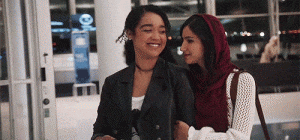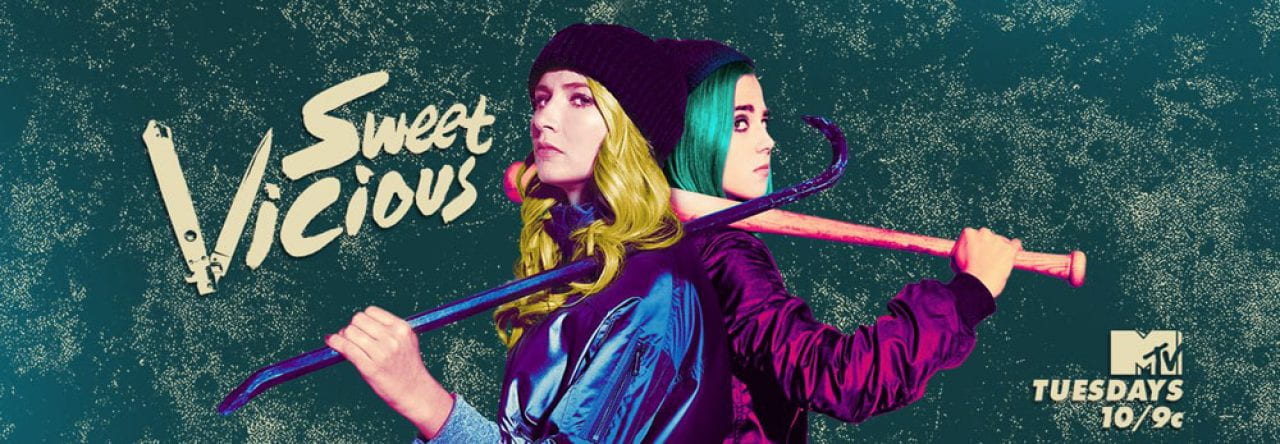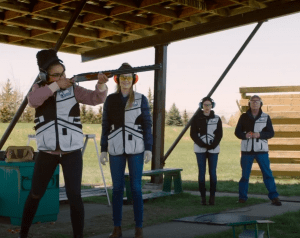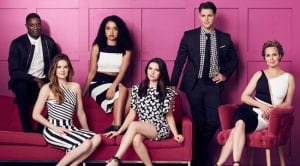Ellithorpe, Morgan E., and Amy Bleakley. “Wanting to See People Like Me? Racial and Gender Diversity in Popular Adolescent Television.” Journal of Youth and Adolescence, vol. 45, no. 7, 2016, pp. 1426-1437. ProQuest, http://prx.library.gatech.edu/login?url=https://search.proquest.com/docview/1795436309?accountid=11107, doi:http://dx.doi.org/10.1007/s10964-016-0415-4.
The paper “Wanting to See People Like Me? Racial and Gender in Popular Adolescent Television” discusses the relationship between adolescent identity and racial and gender diverse television shows. The paper makes the argument that adolescents prefer watching television shows that have characters within their own identity group. It states that this might be due to adolescents seeking to use these characters to build their own identity. The paper conducts a study that compares black adolescents to nonblack adolescents and female adolescents to male adolescents and the diversity of the shows each group gravitates towards. Overall, television shows popular with black adolescents in comparisons to those popular with other racial groups tend to have more black characters. Likewise, popular shows among female adolescents tend to have more female characters than other shows. This paper is important in justifying our research about female representation in SNL episodes. Female representation in popular shows such as SNL impact the shows’ ratings as well as expands the type of audience that views the show.
Feeney, Nolan. “Why Aren’t There More Women On The Top-Earning Comedians List?” Forbes, Forbes Magazine, 11 July 2013, www.forbes.com/sites/nolanfeeney/2013/07/11/why-arent-there-more-women-on-the-top-earning-comedians-list/.
The article “Why aren’t there more women on the top earning comedians list” by Nolan Feeny examines some of the reasons why female comedians do not statistical seem successful in comparison to their male counterparts. The first reason the article argues is the difficulty of women comedians to appeal to male audiences due to dated assumptions that female comedians only talk about stereotypical female experiences such as shopping with their husbands. This strong stereotype reduces the amount of ticket sales female comedians can get. The article goes on to argue that female comedians make more of their income on television than from standup, therefore leading to the discrepancy. However, Feeny still points out that women also struggle to get a spot-on television, unless their comedic personality is especially bold and more masculine. The article also provides statistics as the cause of lack of top paying female comedians. Overall there are fewer female comedians in relation to male comedians, the article argues this is due to the hostile nature of the comedy industry for women. In regards to our research on women in SNL, this article can be helpful by giving us insight into why there is a discrepancy between the number of women and male comedians in the business.
Hester, Michael. “Yes, Female Writers Produce Funny Television.” The DataFace, 30 Aug. 2018, http://thedataface.com/2018/06/culture/comedy-writing-staffs
The article “Yes, Female Writers Produce Funny Television” examines the gender composition of television’s comedy writing staffs. The article provides multiple data sets from various shows and statistics about female writers in comedy to make the over arching argument that comedy shows are more relatable and successful when they have a more gender diverse writing staff. The article first provides data from Rick and Morty that shows the ratings during season three, after the introduction of more female writers, increase. Next the article examines how females are the minority in writing staffs. On average eighty one percent of writing credits on TV comedies are attributed to males. The article goes on to discuss that the inclusion of more female writers will be more beneficial for TV shows. It supports this claim with more data from IMDd that shows a statistically significant improvement between episodes ratings written by a gender balanced writing team. Overall this article’s research will be helpful for us when constructing our own research question. It provides us with useful statistics about comedy writers as well as shows us some of the common data already on females in television comedy.
Kein, Kathryn. “Recovering our Sense of Humor: New Directions in Feminist Humor Studies.” Feminist Studies, vol. 41, no. 3, 2015, pp. 671-681,700. ProQuest, http://prx.library.gatech.edu/login?url=https://search.proquest.com/docview/1768148508?accountid=11107.
The article “Recovering our Sense of Humor: New Directions in Feminist Humor Studies” by Kathryn Kain reviews how recent texts and books are focusing on the relationship between humor and women. The article makes the argument that there has been an “explosion” of discourse about women in US humor. Kein examines how these works attempt to tackle questions such as: How has gendered assumptions about humor lead to exclusions in feminist studies and how has these assumptions affected the work women produce in comedy. The works reframe mainstream thought on humor’s function and its production by analyzing who is producing humor and who is comedy being written for. The article discusses All Joking Aside by Rebecca Krefting and highlights Krefting’s term “charged humor.” Another work the article reviews is Linda Mizejewski’s Pretty/Funny: Women Comedians and Body Politics. The article examines this work’s discussion on the discrepancy between women comedians’ looks and their ability to be funny. The last work the article reviews is The Queer Cultural Work of Lily Tomlin and Jane Wager by Jennifer Reed which focuses on the relationship between feminism and queer politics. Overall “Recovering our Sense of Humor: New Directions in Feminist Humor Studies” can be used as a resource for the common discussions being held about women in comedy.
Lauzen, Martha. “The Funny Business of Being Tina Fey: Constructing a (Feminist) Comedy Icon.” Feminist Media Studies, vol. 14, no. 1, 2014, pp. 106. ProQuest, http://prx.library.gatech.edu/login?url=https://search.proquest.com/docview/1509208764?accountid=11107.
The article “The Funny Business of Being Tina Fey: Constructing a (feminist) comedy icon” by Martha Lauzen discusses the role female comedian and head writer of Saturday Night Live , Tina Fey, has within the comedy industry. The article highlights how she has made huge strides within a commonly male dominated industry. Lauzen examines how Fey constructs her reputation as a women writer as well as how she deals with the media and critics. Fey utilizes a complex mix of self- deprecation and sarcasm when responding to sexist comments about her role in the comedy career. The article discusses how Fey tackles topics such as double standards, feminism, and her role as a woman in comedy. The article more broadly discusses women’s representation in comedic television, such as SNL, as well as their roles’ as writers. Lauzen makes the argument that as more women writers rise in fame, female comics will be given more reputability among reporters and will ultimately seize to be rare occurrences in the field of media. Lauzen argues that this significant shift will establish women’s place in comedy and allow them to concentrate on their work, rather than constantly having to justify their position in such an industry. Overall this article provides us insight about the environment women face in the comedy industry.
Rosa, Christopher. “16 Times Women Changed the Game on ‘Saturday Night Live’.” Glamour, Glamour Magazine, 30 June 2018, www.glamour.com/story/history-of-women-on-saturday-night-live.
The article “16 Times Women Changed the Game on Saturday Night Live” by Glamour writer Christopher Rosa constructs a timeline for the history of women in the popular show Saturday Night Live. The timeline focuses on sixteen major breakthroughs in SNL history that has advanced women’s role within the show. The article makes the argument that Saturday Night Live launched the careers of many influential women that contributed towards achieving some equality within media. The article first opens by highlighting the fact that the first actor of SNL was Glida Radner, who later become a female comedian icon. The article then moves on to highlighting more firsts such as the Candice Bergen being the first female host and the first all-female Weekend Update team. The article also provides these pivotal episodes alongside the text. This timeline will be an important resource to understand the role women played in constructing SNL.








